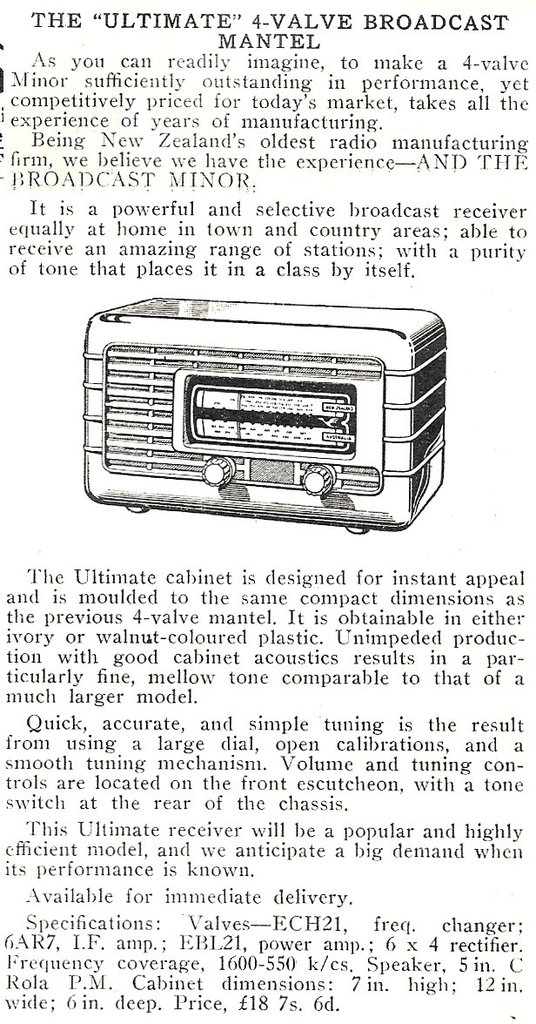4-valve broadcast band mantle receiver.
This is the third incarnation of the Broadcast Minor, its nickname being taken from its predecessor, the RBG 'Broadcast Minor' which had the same dimensions but used different cabinet style- the one also used in the first Broadcast Minor, the RAC.
It was also known, according to the release notes for the next model (the RCP Cygnet), as the Linnet.
 |
| Radio & Electronics, Jan 1954 |
Intermediate Frequency: 460kc/s
Frequency Bands: 1
Chassis Notes(most schematics can be clicked to download a full size version)


General Construction Notes for Radio (1936) Ltd:
Early Radio Ltd. schematics did not show the models, just the year, valves and bands, so some sleuthing is required to find the right one.
Early 30's Ultimate models with three digit model numbers indicated both the number of valves in the set, and the price it retailed for - for example, the model 856 was an 8-valve radio which retailed for $56 pounds. The equivalent Courier models were reversed, so an Ultimate 856 was a Courier 568 (theoretically, at least). This was the Auckland price though, and often the sets would retail for 1 or 2 pounds more in other centres, presumably to cover the freight cost of moving them around the country from the Auckland factory.
Note the use of old resistance terminology on older schematics: ω means ohms and Ω means megohms.
Some 1936-onward 3-letter chassis codes vary the last letter between brands, for example:
BBU - Ultimate model BB
BBR - Rolls (and Golden Knight) model BB
BBC - Courier model BB
All use the same chassis.
Golden Knight, Courier and Rolls appear to use the same copper-painted chassis while Ultimate chassis' are painted silver
After the war a new model code system was introduced, whereby radio models all began with R - the first model being the RA, a dual-wave 5-valve set commonly released in a pressed tin cabinet.